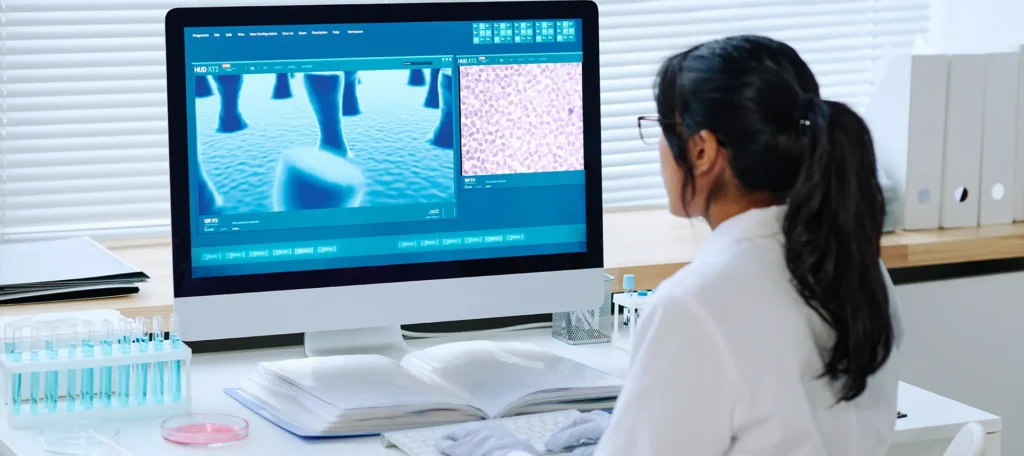Let’s face it—when you hear about scientific breakthroughs in skincare or dermatological disease treatment, it often feels like these innovations are years away from making any real difference to your skin. But things are changing fast. What once took decades to trickle down from the lab bench to the clinic is now happening more swiftly—and more directly—thanks to a growing field known as translational dermatology.
In this article, we’re going to explore what translational dermatology actually is, why it’s important, and how today’s laboratory discoveries are transforming into tomorrow’s skin therapies. From the way new molecules are discovered to how they’re tested in real patients, you’ll get an inside look at how science becomes medicine.
What Exactly Is Translational Dermatology?
Translational dermatology is essentially the bridge between lab-based scientific discoveries and their real-world application in clinical settings. You may have heard of the phrase “bench to bedside”—that’s the essence of this field. Researchers might discover a new pathway or molecule that affects skin inflammation, and translational dermatology helps move that finding through preclinical testing, trials, and regulatory approval to finally become something your dermatologist can use.
Unlike traditional research, which might stop at publishing a paper, translational science is driven by a mission: to solve real clinical problems. That means designing studies with patient outcomes in mind and collaborating with physicians from day one.
And this isn’t just about treating rare conditions. From acne and psoriasis to skin cancer and pigmentation disorders, translational dermatology is making waves across the board.
Why Translational Research Matters in Dermatology
Dermatology is a field that deals with highly visible diseases. When skin conditions affect your appearance, they impact your confidence, mental health, and overall wellbeing. That’s why there’s a real push to make new treatments accessible sooner rather than later.
Historically, it could take 10–15 years for a discovery to become a treatment. But with translational research, we’re seeing that timeline shrink. It’s about removing the silos between lab scientists and clinicians, creating a pipeline where feedback is constant and outcomes are prioritised.
And let’s not forget the complexity of the skin. It’s not just a protective barrier—it’s a living, breathing organ with its own immune, hormonal, and microbiological systems. The need for sophisticated treatments that address skin conditions at the molecular level is exactly why translational dermatology is gaining traction.
How Molecules Are Discovered and Developed
Let’s dive into how this actually works. It usually starts with a scientific question: What’s causing inflammation in eczema? Why does one person’s acne resist standard treatment? What molecular switch drives the progression of melanoma?
To find answers, researchers study cells in petri dishes, run gene sequencing on skin samples, and use animal models to observe the effects of new compounds. When they identify a promising molecule, the next step is to test it in models that more closely resemble human skin—sometimes using sophisticated 3D skin cultures grown in labs.

Take, for example, the development of JAK inhibitors. These were originally investigated for autoimmune diseases like rheumatoid arthritis. But researchers discovered they also had powerful anti-inflammatory effects in skin. That insight led to translational studies evaluating their use in conditions like alopecia areata and atopic dermatitis—and now, we’re seeing real-world results.
The Role of Advanced Drug Delivery Systems
Getting a molecule to work in the lab is one thing—but getting it to work inside the skin is another challenge entirely. This is where drug delivery systems come in. You can’t just smear a complex molecule onto your skin and expect miracles.
Translational dermatology often involves working with engineers and formulation scientists to develop delivery vehicles like nanoparticles, liposomes, microneedles, and transdermal patches. These systems are designed to protect the active ingredient, control its release over time, and get it into the right layer of the skin.
One of the most exciting innovations right now involves dissolving microneedles—tiny, pain-free needles that deliver medication directly into the skin without the need for injections. Trials are underway to see how these could revolutionise the treatment of everything from psoriasis to skin cancers.
Animal Models vs Human Tissues: What Works Best?
Animal models have long been a staple in drug development, but when it comes to skin, they often fall short. Human skin is structurally and immunologically different from that of mice or pigs. That’s why translational dermatologists are moving toward alternatives like human skin organoids, ex vivo skin explants, and lab-grown epidermal models.
These tools allow scientists to test how new drugs affect skin barrier function, immune response, and even pigmentation—without having to wait for clinical trials. It’s faster, more accurate, and ultimately more ethical.
And it’s not just about disease. These models are helping develop better anti-ageing creams, sun protection formulations, and pigmentation treatments too.
Early-Phase Clinical Trials: Where the Lab Meets the Clinic
Once a molecule looks promising in preclinical models, the next step is early-phase trials. These are typically small-scale studies in human volunteers—sometimes even in healthy subjects first—to evaluate safety and initial effectiveness.
For example, a lab may discover a molecule that suppresses certain cytokines involved in rosacea. After showing strong results in skin models, the compound would then be applied topically or injected in a Phase I trial to test how well humans tolerate it.

What’s fascinating here is how trials are now being designed with adaptive protocols—meaning they can evolve based on what early results show. If a formulation works better on oily skin types or darker skin tones, researchers can tweak the trial parameters in real time.
Success Stories: From Research to Treatment
Let’s look at some recent success stories that started in the lab and are now helping patients in clinics:
- 1. Dupilumab for Atopic Dermatitis
Dupilumab is one of the biggest triumphs in translational dermatology. It targets interleukin-4 and interleukin-13, key cytokines involved in allergic inflammation. Initial research on these pathways was done in mice, but human studies rapidly followed. Today, dupilumab is a life-changing treatment for thousands with moderate to severe eczema. - 2. BRAF Inhibitors for Melanoma
Research into the BRAF gene mutation, common in melanoma, led to the development of targeted therapies like vemurafenib. These are now standard treatments for patients with advanced melanoma carrying this mutation. - 3. Topical JAK Inhibitors
As mentioned earlier, JAK inhibitors were repurposed for dermatology through translational studies. Now, topical formulations like ruxolitinib are being approved for conditions like vitiligo and atopic dermatitis.
Key Areas of Current Research
So, what’s on the horizon in translational dermatology? Let’s look at a few exciting areas currently undergoing trials:
Microbiome Modulators
The skin microbiome is an incredibly complex ecosystem of bacteria, fungi, and viruses that live on the surface of your skin. It plays a crucial role in maintaining barrier function, regulating inflammation, and even protecting against pathogens.
When this microbial balance is disturbed—whether due to harsh skincare products, antibiotics, or chronic skin conditions—it can lead to flare-ups of acne, eczema, and rosacea. That’s why researchers are now focusing on developing microbiome-friendly treatments that support the skin’s natural flora instead of wiping it out.
These new formulations go far beyond traditional antibiotics or antifungals. We’re talking about live biotherapeutic products and topical applications that actively seed the skin with beneficial microbes or nutrients to help existing microbes thrive. Some sprays contain heat-killed bacterial extracts designed to train the immune system without introducing live pathogens.
Others use prebiotics to feed good bacteria. Trials are underway to see how these approaches could reduce inflammation, prevent infection, and even slow signs of skin ageing—all while maintaining the skin’s delicate ecosystem. It’s a new frontier in dermatology that treats the skin not as a battleground, but as a garden to be nurtured.
mRNA-Based Skin Therapies
mRNA technology has been thrust into the spotlight thanks to its role in rapid COVID-19 vaccine development, but its application in dermatology is only just beginning. At its core, mRNA therapy works by sending genetic instructions to your cells, telling them to produce specific proteins.
In dermatology, this could mean coaxing skin cells to produce collagen in anti-ageing treatments, or guiding immune responses to fight chronic inflammation or infections. It’s a precision-driven strategy that could dramatically change how we treat complex or previously untreatable conditions.
Early studies are targeting rare genetic skin disorders like epidermolysis bullosa and ichthyosis, where faulty genes result in structural skin problems or impaired healing. By delivering synthetic mRNA directly to affected skin cells, researchers hope to temporarily replace or supplement the missing proteins, giving the skin a chance to repair itself.
Additionally, mRNA is being explored in the context of wound healing and scar modulation, where localised and timed protein production could accelerate tissue regeneration. Although challenges around delivery and immune reactivity remain, the flexibility of this technology makes it one of the most promising developments in translational dermatology today.
Targeted Light-Activated Molecules
Phototherapy has long been a staple in dermatology clinics, used to treat everything from psoriasis and vitiligo to acne and eczema. But traditional light therapy has its limitations—it often affects both healthy and diseased skin cells and typically requires repeated in-clinic visits.
Now, researchers are advancing the concept with a new class of compounds called light-activated molecules. These drugs remain inert until exposed to a specific wavelength of light, offering a highly targeted way to deliver treatment with minimal collateral damage to surrounding tissues.
This approach is particularly useful in managing skin cancers and inflammatory skin diseases where precision is critical. Imagine applying a topical cream containing a dormant molecule, and then using a handheld device to activate the drug exactly where needed—down to the millimetre.
This level of control reduces systemic exposure, limits side effects, and could potentially make treatments safer for longer-term use. Clinical trials are currently exploring these molecules not only for cancer and psoriasis but also for aesthetic applications like pigmentation correction and photorejuvenation. It’s a perfect example of how translational research takes an established idea and re-engineers it for modern, patient-centred use.
Challenges on the Road to the Clinic
It’s not all smooth sailing. Translating a molecule from lab bench to a cream or injection in your dermatologist’s office involves many hurdles:
- Regulatory approval is complex and time-consuming.
- Cost of development can run into millions, making it risky for early-stage ideas.
- Variability in human skin—due to age, ethnicity, environmental exposure—can complicate clinical trial results.
- Funding gaps between academic discovery and commercial investment often delay promising treatments.
Yet, despite these challenges, translational dermatology is steadily gaining support from funding bodies, research institutions, and biotech companies eager to speed up the journey from concept to clinic.

Collaboration Is Key: Scientists, Clinicians, and Patients
One of the greatest strengths of translational dermatology lies in the seamless collaboration between scientists and clinicians. Researchers working in labs bring deep insights into molecular mechanisms, but they often need input from dermatologists who deal with real patients every day.
By teaming up, these professionals can identify which scientific discoveries are clinically relevant and which ones might not stand up in the complexity of human skin. The dialogue goes both ways—clinicians can also pose unanswered questions from the front line, sparking research that is immediately grounded in practical needs.
This interconnected approach is what drives innovation forward. Gone are the days when a laboratory team would hand off a finding to a pharmaceutical company and hope for the best.
Now, dermatology trials often begin with a joint team planning every step—from lab validation to patient recruitment. These teams include not just scientists and doctors, but also biostatisticians, data analysts, and regulatory experts. Everyone brings something different to the table, ensuring the final product is both scientifically sound and clinically useful.
But the role of patients cannot be overstated. More and more, patients are being viewed not as passive trial subjects but as active contributors to the research process. They help define which outcomes matter most, whether it’s faster relief from itching or less skin redness.
Patient advocacy groups are also pushing for more inclusive trials that reflect a wider range of skin tones, age groups, and comorbidities. This makes the resulting treatments more effective across real-world populations and not just idealised clinical settings.
Technology is also enhancing this collaboration. AI tools are now being used to comb through vast clinical datasets and suggest promising compounds for testing. Meanwhile, big data platforms help researchers map disease progression patterns and predict which patients might respond to a new treatment.
When all of these pieces come together—researchers, doctors, patients, and smart technology—the pace of innovation increases dramatically. Translational dermatology isn’t just a research method; it’s a team effort that’s changing the way we tackle skin conditions.
The Future of Translational Dermatology
If the current pace of progress is any indication, the future of translational dermatology is set to be nothing short of transformative. Already, the lines between laboratory research and clinical application are blurring.
We’re seeing new tools like machine learning models predicting treatment outcomes based on skin biomarkers, while portable imaging devices allow for more precise monitoring of therapy effects in real time. These changes aren’t theoretical—they’re actively shaping how trials are run and how treatments are selected.
Personalised medicine is poised to be a cornerstone of this future. As our understanding of genomics and immunology deepens, dermatologists will be able to offer bespoke therapies tailored to your individual skin profile.
Rather than a one-size-fits-all cream or pill, you could be prescribed a treatment that aligns with the exact inflammation pathways or microbial imbalances affecting your skin. This isn’t just about efficacy—it also means fewer side effects and better patient adherence, because the treatment feels more relevant to your experience.
Another promising trend is the globalisation of translational trials. With digital platforms, cloud-based trial management, and teledermatology, research can now include participants from around the world.
This improves the diversity of trial data, helping researchers identify nuances across skin types, climates, and lifestyles. The result? Treatments that are more universally effective and better suited for real-world application, not just the controlled environment of a lab or clinic in one country.
So what does all this mean for you? Imagine walking into a dermatologist’s office in a few years and having your skin quickly assessed using AI-enhanced imaging, combined with a genetic swab to analyse your inflammation pathways.
Moments later, a treatment plan is generated—one that includes a cream with a lab-validated molecule, a tailored dietary recommendation, and even a microbiome-restoring spray. That level of precision and speed may sound futuristic, but thanks to translational dermatology, it’s a future well within reach.
Final Thoughts
Translational dermatology is changing the game. It’s not just about understanding skin diseases anymore—it’s about fixing them, faster and more precisely than ever before. From novel drug delivery systems and mRNA-based treatments to microbiome modulators and personalised therapies, we’re entering a new era where science gets personal.
So next time you read about a “groundbreaking discovery” in a journal or on the news, don’t assume it’s decades away. Thanks to the work happening in translational dermatology labs around the world, it might already be closer than you think—sitting in your dermatologist’s fridge, ready to help you.
References
- Guttman-Yassky, E., Bissonnette, R., Ungar, B., Estrada, Y.D., Suárez-Fariñas, M., Ardeleanu, M., Esaki, H., Mitsui, H., Kavanaugh, A., Zhang, F. and Krueger, J.G., 2019. Dupilumab progressively improves systemic and cutaneous abnormalities in patients with atopic dermatitis. Journal of Allergy and Clinical Immunology, 143(1), pp.155–172.e12.
- Whitley, R.J., 2021. mRNA vaccines and the future of vaccinology. Nature Reviews Immunology, 21(2), pp.65–67.
- Eyerich, K., Novak, N. and Biedermann, T., 2018. Translational immunology in atopic dermatitis. Journal of Allergy and Clinical Immunology, 142(4), pp.1001–1007. Available at: https://www.jacionline.org/article/S0091-6749(18)31191-5/fulltext
- Narla, S., Lyons, A.B., Kohli, I., Torres, A.E., Parks-Miller, A., Ozog, D.M., Ross, M.I. and Lim, H.W., 2020. The importance of the human skin microbiome in dermatology. Clinics in Dermatology, 38(1), pp.58–66.
- Damsky, W., King, B.A., 2017. JAK inhibitors in dermatology: The promise of a new drug class. Journal of the American Academy of Dermatology, 76(4), pp.736–744. Available at: https://doi.org/10.1016/j.jaad.2016.12.004
